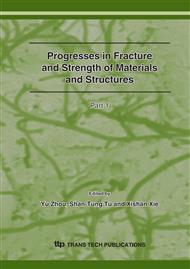p.503
p.507
p.511
p.515
p.519
p.523
p.527
p.533
p.537
Welding Characteristic Evaluation of GMAW and Laser Cladding for the Gas Turbine 1st Blade
Abstract:
The advancement in superalloys permits the hot gas path components to operate for thousands of hours under severe centrifugal, thermal and vibratory stresses. The blade of a gas turbine must withstand the most severe condition combined of temperature, stress, and environment. After a long operation, the damaged blades of a gas turbine used are welded for build-up and repaired. We analyzed and compared the mechanical properties of GMAW(Gas Metal Arc Welding), a manual welding method, a laser cladding method, and an automatic welding method under research and development.
Info:
Periodical:
Pages:
519-522
Citation:
Online since:
September 2007
Keywords:
Price:
Сopyright:
© 2007 Trans Tech Publications Ltd. All Rights Reserved
Share:
Citation:


